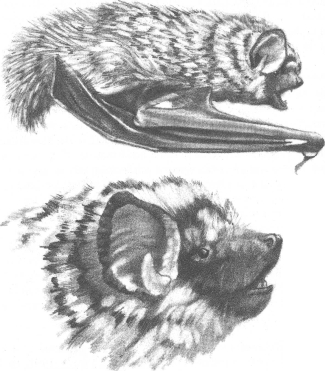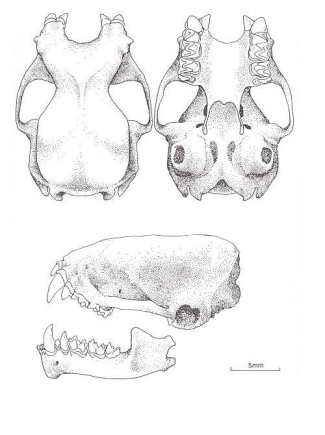Mating likely takes place during the autumn migration or in winter; females are pregnant during the spring migration. Although there are no breeding data available for British Columbia, in other parts of Canada young are born in June and nurse from early June to the end of July. Normally females leave the young at the roost at night, but they can carry their young for about a week after birth. Females typically give birth to twins, although one, three or four young have also been observed. The newborn bats are undeveloped with closed eyes and ears. The top of the head, shoulders and tail membrane are covered with fine, silver-grey hairs and the underside is naked. Development is slow with the ears opening within three days and the eyes in around twelve days. By five weeks the young are capable of sustained flight. Even after the young are flying, family groups remain together for several more weeks. The relatively lengthy period of parental care shown by female Hoary Bats may be because this mammal does not hibernate - it has fewer energy demands than hibernating bats, which have to accumulate fat reserves for winter.
|
Hoary Bats emerge about 30 minutes after sunset to feed and continue to forage throughout the night. Nursing females reduce their foraging time during the the first few weeks of nursing to spend more time with their young at the roost.
The Hoary Bat is suited to preying on large insects, with its large skull and teeth and its swift flight. It emits low-frequency echolocation calls that are most effective for detecting large prey at long range. The Hoary Bat hunts at tree-top level in open areas such as fields and forest clearings. Large moths, beetles and dragonflies form the bulk of its diet; small insects, such as midges and flies, are less common prey.
The Hoary Bat is often attracted to insect concentrations at lights outside buildings; permanent outdoor lights may even be responsible for its presence at some locations in the province. In well-lit areas where insect prey are concentrated, a Hoary Bat will establish a feeding area and chase away other bats (including other Hoaries). Loud chirping calls audible to the human ear are often emitted during these chases. Besides their role in communication, these calls may also provide some echolocation information.
|
Because of its tendency to roost in the branches of coniferous and deciduous trees, the Hoary Bat is often referred to as a tree bat. Specific details on tree roosts in British Columbia are not available - only a few individuals have been found roosting in the branches of fruit trees in the Okanagan. In Manitoba the Hoary Bat roosts some 8 to 12 metres above the ground, usually near the ends of branches of deciduous trees such as Green Ash. It seems to select sites that will conceal it from predators and yet also provide an open flight path for easy access to and from the roost. In Oregon the Hoary Bat prefers old Douglas-fir forests, presumably because of its tree-roosting habits. Although its usual day roosts are in the branches of trees, the Hoary Bat has been found roosting in tree cavities in British Columbia: one was collected from a hollow cedar tree in Garibaldi Provincial Park and another was found in a woodpecker nest in a tree cavity. The Hoary Bat rarely roosts in caves or buildings.
In summer, males are solitary and females roost with their young. Unlike most of our bats, females do not congregate in maternity colonies. Because their tree roosts are more exposed than the maternity roosts of other bats, females will stay with their undeveloped young for longer periods to keep them warm. Family groups will use the same roost for more than a month.
Circumstantial evidence based on seasonal occurrences in British Columbia strongly suggests that the Hoary Bat is migratory. There are records from 19 June to 15 October with most from mid August to early October, the period when the autumn migration is presumed to take place. The winter range of British Columbian populations is unknown. It appears that populations in the Pacific Northwest migrate to southern California or Mexico for the winter.
|
|


